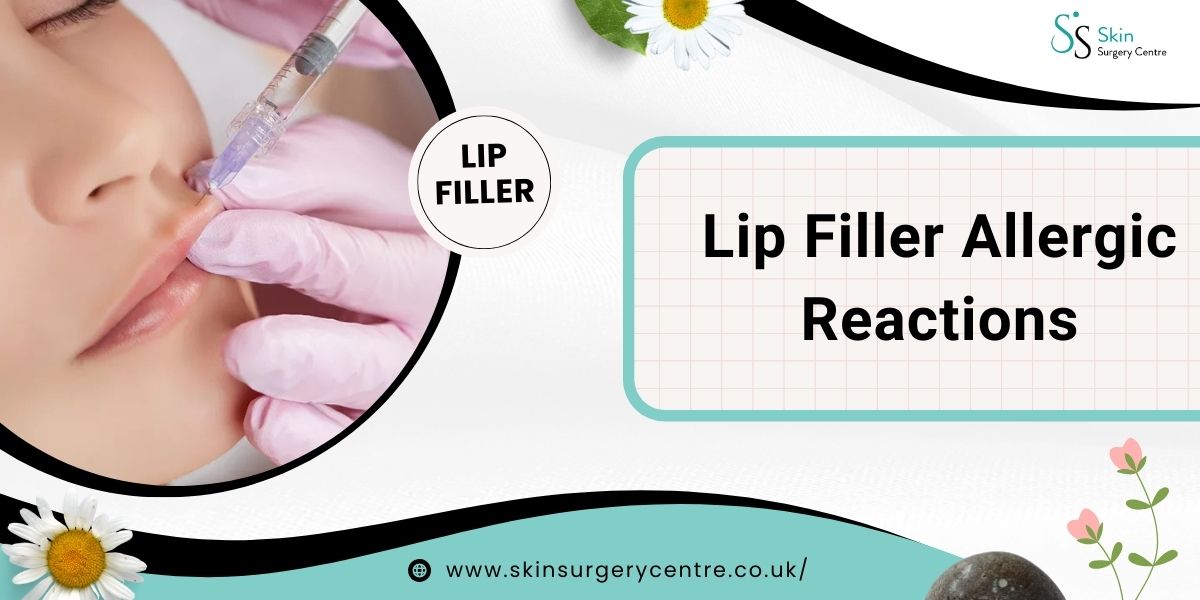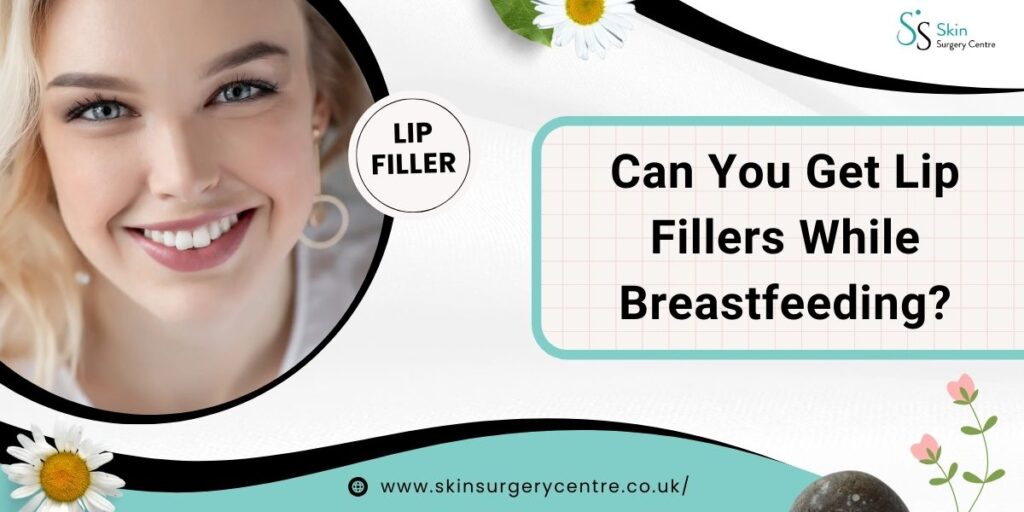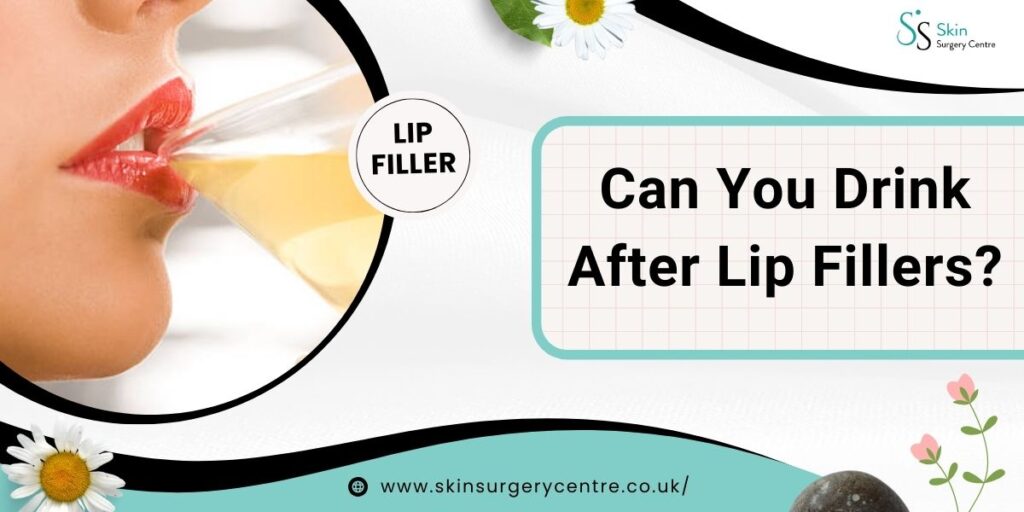Can You Get Lip Fillers While Breastfeeding? UK Expert Answers
Many new mums wonder: Can you get lip fillers while breastfeeding? It’s a common question in UK clinics, and this...

Lip Filler Allergic Reactions: Enhancing lips with lip fillers is among the most popular cosmetic procedures because fillers are easy and quick to use.
However, like any aesthetic procedure, there is a risk of allergic reactions occurring alongside other negative outcomes. Even though these complications are not so common, it is extremely important to learn how to deal with these issues should they arise.
This article will outline the causes and symptoms of allergic reactions, the types of responses, the ways to prevent them, and offer practical solutions for managing them.
If you are newly considering lip fillers or are already in the patient programme, this guide will help you remain up to date.
While not common, lip filler allergic reactions are possible and stem from the different ingredients in the lip filler or the way the lip filler was injected. Potential triggers include:
Hyaluronic acid, or HA, is the most commonly used ingredient in lip fillers because it is naturally found in the human body. Some people do have sensitivities to HA that can lead to post-injection symptoms such as visible redness, swelling, or itchines at the injection site.
Lidocaine is often added to some fillers as a numbing agent. Lidocaine, added into the fillers, helps reduce discomfort during the procedure. Hives, swelling, and anaphylaxis are examples of allergic responses one may have to lidocaine.
Allergies can develop from fillers coming from bovine (cow) or human collagen, with bovine sources being more prone compared to human. Individuals with a history of allergies to animal-derived collagen tend to have a higher risk.
To increase durability, many filler brands use linking chemicals and preservatives. Sometimes these additives are known to provoke allergic reactions and irritation to sensitive tissues.
Improper hygiene during injection can lead to bacterial contamination or biofilm, which can lead to infections or granuloma, which is a specific type of inflammatory lump. If the procedure is performed in an aseptic clinical setting, these risks can be lowered.
The signs of a problematic reaction can differ based on severity and type. Look for the following symptoms:
The site of injection may experience swelling, tenderness, and redness, along with the region surrounding it bruising or itching.
Your body may show some rashes or hives. In some severe cases of allergic reactions, such as anaphylaxis, light-headedness, breathing problems, or wheezing may occur.
Some people may show symptoms a couple of weeks to even years after the procedure has been done. These may include granulomas, persistent lumps, or chronic inflammation, and swelling (Persistent Intermittent Delayed Swelling or PIDS). Always inform your clinician if there are any unusual symptoms emerging well after treatment.
There are allergic and adverse reactions, and all can appear in different ways with different features and timing.
A filler material is considered to be a foreign body and stimulates an inflammatory immune response reaction weeks, months, or years after treatment. This is one of the most commonly reported delayed complications.
Angioedema is an allergy that results in rapid swelling and enlargement of tissues located on deeper layers of the skin. This may be very severe, especially when it involves swelling of the lips and upper airways.
This is a lump caused by the lip filler, considered normal by most practitioners. It is often seen after an immune response to the injected substance.
Although rare, not observing proper hygiene and care during or after the procedure can lead to infection. Look for pain, extra warmth, and excessive swelling at the spot as these symptoms mark an infection.
The types of reactions will determine how severe the reactions will be, as well as the delays that occur. Angioedema and other hypersensitivity reactions are immediate reactions that happen within minutes to a few hours after treatment.
Delayed Reactions: Granulomas, PIDS, and signs of chronic inflammation may take weeks, months, or even years to manifest. For example, HA filler granulomas appear on average forty-one months after injection.
As with everything in life, the saying “prevention is better than cure” is particularly true when it comes to fillers.
Management depends on the degree and type of reaction but needs to be conducted by the relevant medical personnel to ensure safety without harm.
Allergic reactions to lip fillers are very uncommon, but when they do occur, it is essential to be informed and choose the best possible aesthetic practitioners for these procedures. Implementing measures to understand potential risks, recognising signs, and following best preventative practices greatly decreases complications.
In case there are any symptoms, mild or intense, pay them some attention, and contact your clinician for a review and treatment as soon as possible.
Are you considering getting lip fillers but don’t know which clinic or doctor to choose? Ensure you seek and select a practitioner who places primary importance on safety, hygiene, and your well-being.
A: No, allergic reactions are rare but can happen.
A: Swelling, redness, itchiness, or lumps, either immediately or weeks later.
A: Yes, especially HA-based fillers can be dissolved using hyaluronidase.




Many new mums wonder: Can you get lip fillers while breastfeeding? It’s a common question in UK clinics, and this...
If you’ve had lip fillers or are planning them, you may wonder: Can I put lip balm on after lip...
Can you exercise after lip fillers? At our London, Manchester, and Birmingham clinics, this is one of the most common...
Can you vape after lip fillers? It’s one of the most common questions we hear at our London, Manchester, and...
As one of the most sought-after procedures in cosmetic enhancement, lip fillers help people restore volume and definition to their...